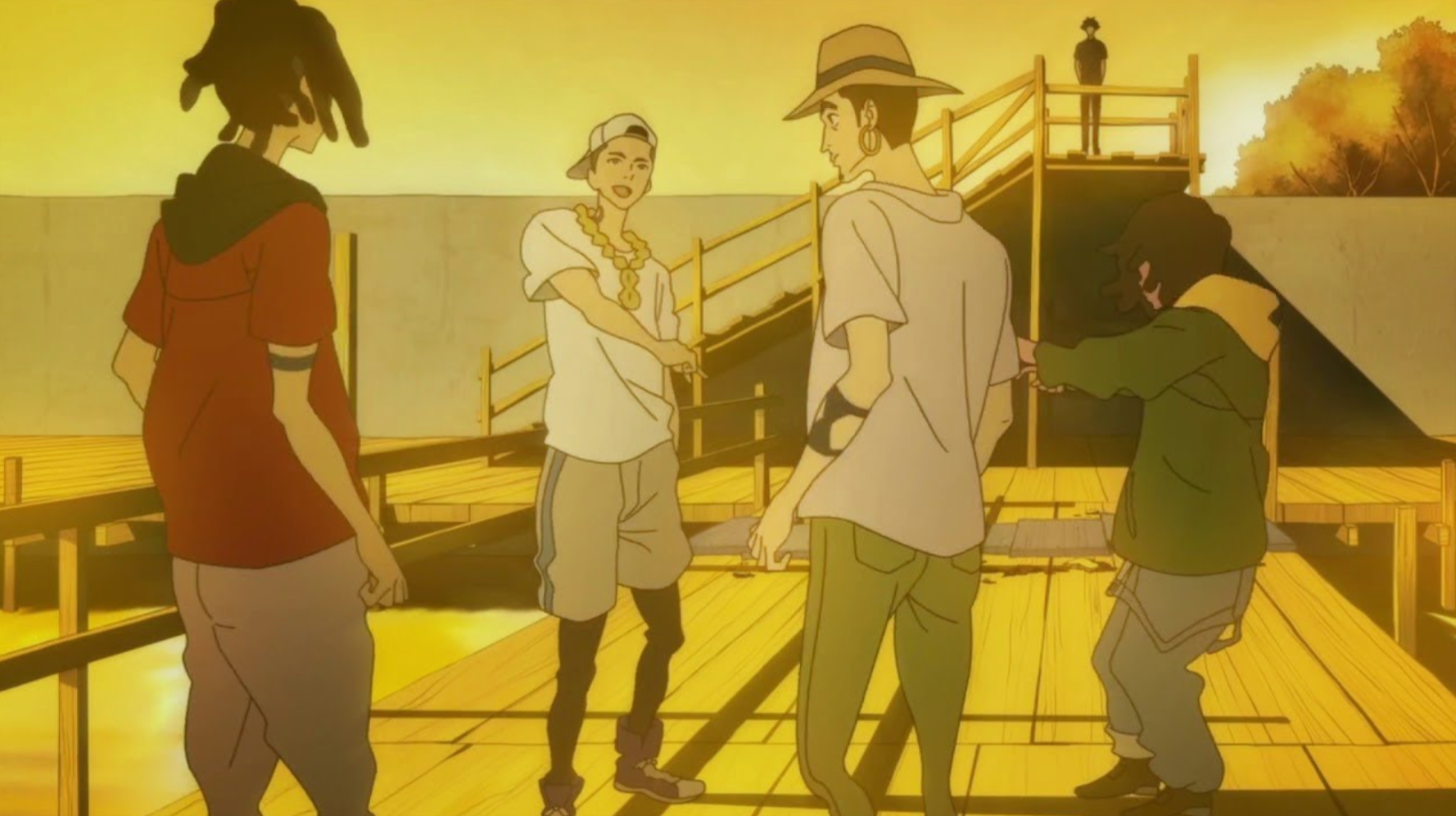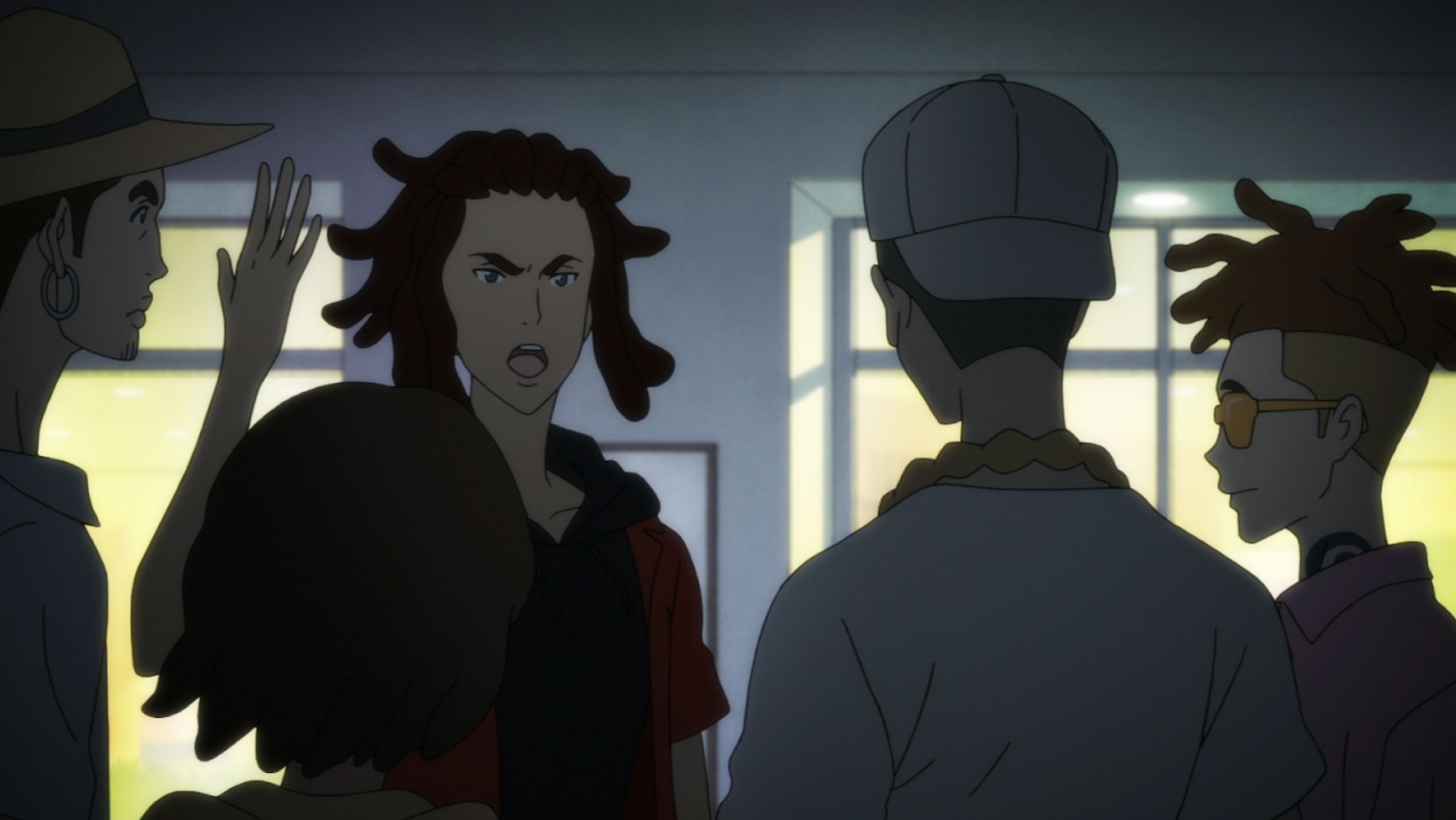YO, JAPAN, YOU WANNA COME OUT HERE: HIP-HOP’S JOURNEY TO JAPAN
よ、日本、ここに来たい : ニューヨークから日本へ
Graphic by Agnes Lee
MAGNA CARTA… HOLY GRAIL – Hip-Hop’s Beginnings
マグナカルタホーリーグレイル-ヒップホップの起源
“Hip-hop is the streets. Hip-hop is a couple of elements that it comes from back in the days... that feel of music with urgency that speaks to you. It speaks to your livelihood and it's not compromised. It's blunt. It's raw, straight off the street - from the beat to the voice to the words.”
-Nas
Breakdancing. Image courtesy of Black History in Two Minutes.
The influence that Black culture has in America is undeniable. Most popular fashion, music, food, and more can be traced back to the African American people who created and popularized them. Hip-hop brings all these pieces of Black culture under one rhythmic umbrella — incorporating art, music, dancing and rap into a single, cohesive culture.
Hip-hop was born in the Bronx in the early 1970s by DJ Kool Herc. He began spinning records that switched from song to song, incorporating isolated and repeated music breaks. After its beginnings, hip hop grew into something much bigger than was anticipated by its first listeners. Americans couldn’t get enough of this new sound and it began to spread across the country. The lyrics of hip-hop songs were more like poetry; rappers used their writing to cope with poverty, violence, and discrimination in the United States.
Throughout the 1970s, the smell of paint fumes wafted off of freshly graffitied walls and the streets were filled with kids laughing and dancing to the thumping music spilling out of the boombox sitting on the curb. This uncontainable energy spread its influence, and around 10 years later, hip hop traveled 6,741 miles to Tokyo, Japan.
Hiroshi Fujiwara. Image courtesy of Grailed.
The Trials and Tribulations of Learning a New Language
Buddha Brand. Image courtesy of Komony Records.
Hip hop's versatility appealed to Japanese streetwear designer Hiroshi Fujiwara, who introduced Japan to hip hop in the 1980s after returning to Tokyo from New York City with hip hop records that he brought to clubs to spin. By this point, Japanese rappers rapped exclusively in English, but when hip hop was popularized in the clubs, they grew comfortable rapping in Japanese, combining their new style with old school American hip hop. By the 1990s, the Tokyo hip hop scene moved from underground to mainstream. Rap groups like Buddha Brand began performing in clubs and gained popularity among the greater Tokyo population.
Club Harlem, a Japanese hip-hop club. Image courtesy of Harlem.
GANYMEDE ELEGY – Cowboy Bebop
ガニメデ慕情カウボーイビバップ
“I believe samurai in the Edo period and modern hip-hop artists have something in common. Rappers open the way to their future with one microphone; samurai decided their fate with one sword.”
-Shinjirou Watanabe
Pre hip-hop, Japanese music was already influenced by Black American sounds. Japanese city pop (think: Mayonaka no Door and Plastic Love) has deep roots in American 1970s jazz that was created in Black communities. Jazz’s popularity across Japan is evident when watching anime: a style of animated Japanese films and television catered towards both adults and children. One of these jazz-influenced shows is Cowboy Bebop, which follows a group of bounty hunters who fly around the galaxy in their ship trying to get cash. It was released in 1998 and featured a predominantly jazz soundtrack. The show’s opening song “Tank!” reflects this influence with the ringing tones of the alto saxophone and double bass. The show’s director, Shinjirou Watanabe, effortlessly meshes Black music and Japanese culture with a futuristic plot and advanced animation. Cowboy Bebop is considered one of the greatest anime films of all time. In fact, it has a 100% rating on Rotten Tomatoes; its immense popularity propelled jazz culture to new heights in Japan. This success paved the way for hip hop’s rise in popularity during the 2000s, which coincided with the work of the late record producer Nujabes.
Samurai Champloo. Image courtesy of Twin Cities Geek.
TEMPESTUOUS TEMPERAMENTS- Samurai Champloo
猛烈な気質サムライチャンプルー
“Yeah, sharp like an edge of a samurai sword/The mental blade cut through flesh and bone/Though my mind's at peace, the world out of order”
-Nujabes, Shingo2
Jun Seba, better known by his stage name, Nujabes, was the father of lo-fi hip-hop — a distinctly Japanese style of hip-hop recognizable by its soft beats, instrumentals and background anime dialogue. His work in Samurai Champloo helped hip hop move beyond the club scene and into Japanese popular culture. The 2005 anime tells the story of a waitress in a teahouse who rescues two samurai from execution under the condition that they help her find a samurai who smells like sunflowers. Nujabes produced the show’s incredible soundtrack. Every song features his immediately recognizable lo-fi beats, giving the otherwise mature show a distinct, nostalgic edge that has been embraced by anime fans around the world nearly 20 years later.
The opening song “Battlecry” is considered one of the greatest anime openings of all time. It fuses Japanese beats with hip-hop and helped to further cement hip-hop into mainstream Japanese culture. Hip-hop’s influence in this anime extended even beyond the music. In the show, one of the samurai, Jin, fights his opponents in the traditional samurai style. The other samurai, Mugen, fights by breakdancing. Reformation of hip-hop dance culture demonstrates hip hop’s versatility; combining it with different cultures gives birth to a completely new dimension of the original.
Nujabes. Image courtesy of Samken.
WEAK HUMANS, WISE DEMONS- Devilman Crybaby
人間は弱く 賢い悪魔デビルマンクライベイビー
“Is there a light of hope? Maybe somewhere, but i’m still lost here, dead ends everywhere”
-Gabi
The anime, Devilman Crybaby, is also a prime example of hip-hop’s influence on Japanese culture. While the anime as a whole has little to do with hip-hop culture, a subplot features five characters – Wamu, Gabi, Hie, Kukun and Babo – who form a freestyle rap group called Wamu’s Gang. As the show progresses, their raps add an extra layer of social commentary to an already social-commentary-heavy anime. The group’s raps navigate living in a town they hate and trying to live with no money, education or ambitions — an attitude reminiscent of the development of hip-hop in New York. Sadly, Wamu’s Gang had a devastating ending, but fans of Devilman Crybaby remember their lasting impact on the plot and the show’s depth.
Left: Wamu’s Gang. Image courtesy of Youtube. Right: eft: Gabi Rapping. Image courtesy of Black Girl Nerds.
RESPECT THE CULTURE
文化を尊重する
“Hip-Hop isn't just music, it is also a spiritual movement of the blacks! You can't just call Hip-Hop a trend!”
-Lauryn Hill
While most of the incorporation of hip-hop into Japanese culture has been with appreciative intent, it is important to discuss the racism that comes with the adoption of Black culture. In Samurai Champloo, Mugen is darker-skinned and his character is more erratic and sleazy than the fair-skinned Jin, who is always cool-headed and keeps his composure. Many of the “bad guys” in the show are dark-skinned as well, perpetuating colorism, or the prejudice associated with darker skin. In Devilman Crybaby, many members of Wamu’s group have culturally Black hairstyles such as dreads and locs. Such hairstyles are typically viewed as dirty or unprofessional on Black people but are viewed as trendy on anyone else. The line between appreciation and appropriation is clearly a very fine one.
It’s beautiful when one culture transforms by incorporating aspects of another culture, but this should not be done at the cost of simultaneously reinforcing offensive and harmful stereotypes.
Hip-hop’s influence on global cultures cannot be understated. Its versatility and adaptability allow endless potential for new rhythmic and lyrical creations. Every part of hip-hop culture, including the people who created it, should be appreciated and shared. Then, when we reverse the passing of time and maybe add a little reverb, we’ll be right back where we started: listening to DJ Kool Herc spin records on the couch of a house party in the Bronx.









